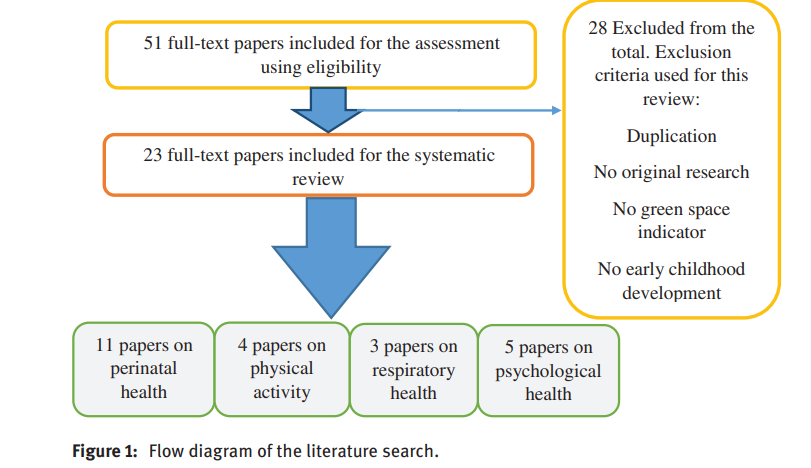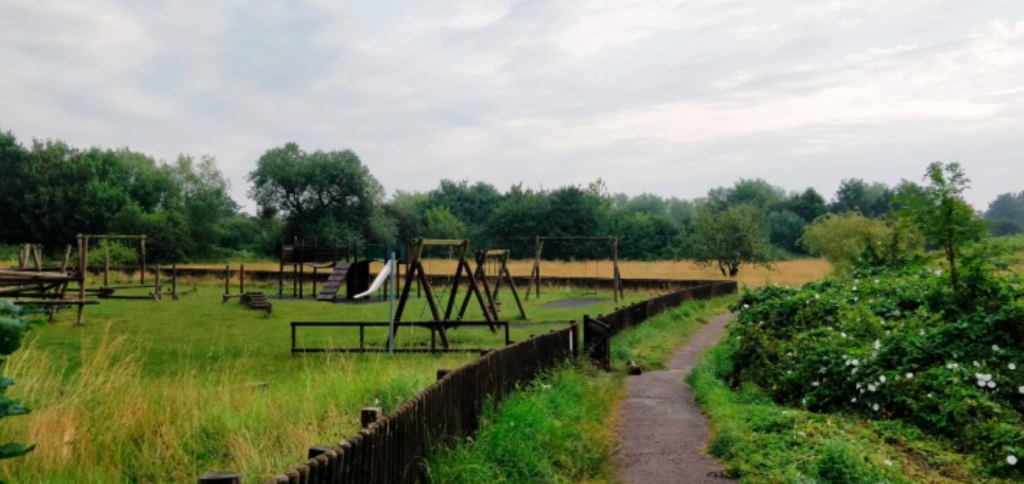Introduction
Urban environments create struggles and health challenges for children, including exposure to air and noise pollution, discouraging physical activity, and increased temperatures. All of these things can negatively impact a child’s well-being and increase their likelihood of developing a chronic illness. This systematic review aims to explore the relationship between green space and early childhood development. This article caught my attention because although there is a lot of research about how green spaces positively influence communities, I have not heard much about how they can influence childhood development. Children are a very important part of our society, and they are the future. Studying the impacts that green spaces can have on childhood development can help educators better understand development.
Methods

Results
The evidence collected in this study prove that exposure to green space is associated with better pregnancy outcomes including birth weight and a lower likelihood of preterm birth. The exposure to green space during childhood was shown to increase physical activity, promote social interaction, and reduce stress and depression. However, these relationships are stronger in lower socioeconomic classes, and they vary by gender. The study believes that children from lower socioeconomic backgrounds are impacted more by green spaces because they are more likely to live in areas with more environmental problems.
There is a lack of direct evidence between green space and early childhood development. However, this review did show that exposure to green space influences a child’s physical growth and cognitive development.
Improvements to the Study
I believe that this study would benefit from providing clarity about what they consider “early childhood development” to be. In my opinion, the evidence that shows how green spaces positively influence physical and cognitive development, does point towards influencing childhood development. Physical and cognitive development are two key parts of overall development. I believe that this article would be improved by focusing on a single aspect of childhood development, such as only physical. Or the article could be organized in sections by the type of development.
Future Research
Future research in this field could separate children in age categories (0-1, 2-4, 5-7, 8-11, etc), and study how exposure to green spaces impacts their development. It would be interesting to follow the same child all the way through adulthood to study changes. Additionally, it would be useful to see how green spaces impact children of different ages. I believe the impacts on a 2-year-old and an 11-year-old would be vastly different. These results could assist urban planners and schools in designing green spaces in their communities.
Source
Islam, M. Z., Johnston, J., & Sly, P. D. (2020). Green space and early childhood development: a systematic review. Reviews on Environmental Health, 35(2), 189-200. https://doi.org/10.1515/reveh-2019-0046
